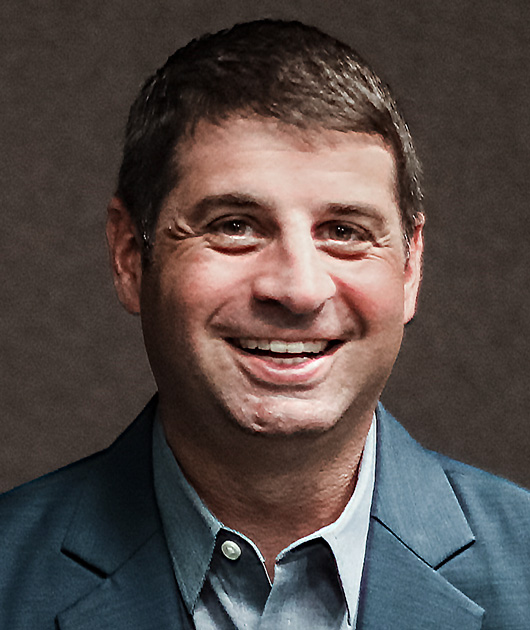

|
2022 was a confusing year in claims. Inflation wreaked havoc in many ways – but technology matured and helped many claims operations streamline their work significantly. To see what 2023 holds in store, ITL Editor-in-Chief Paul Carroll talked with Andy Cohen, president and chief operating officer at Snapsheet, an innovator in claims management. Cohen says claims operations are poised to go on the offensive in 2023 and make great progress – though not necessarily in the ways you often read about.
|
ITL:
To get us started, how would you summarize the year in claims in 2022?
Andy Cohen:
2022 was a really challenging year for the industry, writ large, both from a macro and a micro perspective. Inflation obviously affected the cost of repairs and all the inputs in the insurance value chain. And you had this bounce back of both frequency and severity of losses. The year was pretty benign for Cat, but then Hurricane Ian was one of the biggest storms ever. From a claims perspective, people were resetting and on the defensive in 2022.
That really sets up for 2023 for the carriers. I think most carriers are going to go on the offensive now that they have an established base on frequency, have their staff fully back and can execute a playbook to attack both expense and loss costs.
ITL:
In terms of the technology that you and others are developing to process claims faster and more efficiently, how would you describe the progress in 2022? And then what do you see maybe being possible in 2023?
Cohen:
2022 was very much a continued acceleration of technology that can drive the right work to the right people at the right time. Technology increasingly helps reduce human interactions on claims, managing expense while sifting through the files and identifying those that need a human touch. There was a huge amount of progress among companies that are bringing claims in-house for the first time, insurtechs that are building claim operations and MGAs [managing general agencies].
I think 2023 is when the major carriers really start to focus on automation. It’s not for the sake of reducing people. It’s moving claims from a reactive process – think of an old school, diary-driven, analog process – to a digital, proactive process. That’s where we're seeing carriers really focus the capex investment and R&D dollars. You’ll have this whole new cohort of claims resources that replace the people who left the workforce, and the technology will point them in the right direction and guide them through the claims management process in a way that hasn't been possible with legacy technology.
ITL:
I'll run something by you that I wrote recently. I think people are maturing in their understanding of technology. Rather than seeing AI or some other technology as the answer to everything, they’re focusing more on how it can solve actual problems in a real business setting, even though some of those problems may not be that sexy. For instance, there’s a ton of focus on how AI can inspect photos of auto damage and render a quick estimate – but that doesn’t actually take that much time out of a claims process that can last weeks, and AI can speed that process in lots of other ways, too, perhaps more important ways. Does that thesis make sense?
Cohen:
Your thesis is spot-on. The tag line I like to use is, Let's move from alchemy to reality.
There's a huge opportunity to take these discrete steps, whether it's models, whether it's AI, whether it's workflow, whether it's predictive analytics, and string them together to get to a much more powerful outcome. You get a much clearer ROI, whether that’s in a better customer experience or in reduced loss cost or expense.
It's really about simplifying the process. When anyone in the world gets in an auto accident, only three things can happen. They're going to have the vehicle repaired, they're going to cash out or it's going to be a total loss. Carriers are using technology and workflow to figure out as fast as possible, is it going to be a cash out, is it going to be a repaired claim or is it going to be a total loss. Then they get the right resources, including the right people when a person is needed, based on the desired outcome. Carriers of all types – auto, home, commercial lines, personal lines – are tackling these really challenging issues with design-based thinking that starts with, What is the best outcome for the customer?, and uses technology to free up scarce, knowledgeable human capital to work on the parts of the process in the middle that aren't super easy or aren't super clean.
ITL:
Triage based on AI seems to be something that loads of companies are working on.
At the risk of digressing for a moment, how good has AI estimating based on photos gotten?
Cohen:
The AI is exceptionally strong at identifying whether the car is going to be a total loss, though that was more challenging this year because rapid inflation meant the cars were worth more. Total loss rates actually went down a couple of points this year as a result. The AI is also getting really good on certain use cases – light hits, low damage, older model years – but it's not where it needs to be. If an estimate takes 25 minutes, maybe the AI can shave a couple minutes off a medium-severity estimate, but the AI costs more today than the two minutes is probably worth.
The real benefit is operationalizing technology in the end-to-end and doing it so that as the AI continues to advance and goes from saving two minutes to 15 minutes, we can take advantage of it.
ITL:
When you take a look at the whole process, how much expense can you take out of the claims process?
Cohen:
It depends on the line of business, but with our claims platform we've been able to remove the adjuster from significant chunks of work. If you think about the adjuster in the legacy world as a switchboard operator, they had to do things like confirm coverage, understand the limits deductible, set the reserve, send an email, acknowledge it, perhaps pass it over to a vendor to go assess the damage or fix the car. Think about all the steps the adjuster had to take to keep everything moving. But we’ve seen dozens of carriers go from automated coverage verification or fraud detection through setting the reserve and communicating automatically and passing the assignment out. 65% of all communications coming out of our platform are automated.
That’s where you’re not talking just about taking out minutes of work but can get three or four times the level of efficacy out of your adjusters by removing administrative tasks from the equation. On a claim of $4,000, adjustment expenses might be $400 to $500, and you can take a big chunk out of that. Meanwhile, adjusters can spend more time on complex cases, walking the insured through their options and the process and the next steps and generally keeping them informed.
You also get huge benefits from a compliance and regulatory standpoint. If it's a property claim in Florida and you need to attach the Florida Homeowners Bill of Rights to your communications, the system can automatically do that. The customer submits documentation or invoices or receipts, and the system says, Yes, I received them. Think about how much that reduces inbound calls asking about status. We're seeing just massive savings right now.
ITL:
How much time can you take out of the process?
Andy Cohen:
We passed 700,000 appraisals and supplements last year, and we’ve been able to scale while maintaining best-in-class cycle times. We can complete an estimate in just a couple of days, and that's hugely valuable because that reduces the need for rental and storage. Before COVID, the average number of rental days for a claim was roughly 13 days, and in 2022 we approached 21 days. When you shrink that time, you not only cut expenses, you improve the customer experience.
ITL:
To zoom out a bit, I assume that, as chaotic as the auto repair world is at the moment, electric vehicles are going to toss all the cards up in the air.
Cohen:
The penetration of electric cars is far outstripping the ability to repair them. They’re just different. There are way more sensors on the cars, way more parts. Even the bay you use to fix them needs more space.
ITL:
Sounds like there will be plenty for us to talk about this year and well beyond. Thanks for taking the time.







